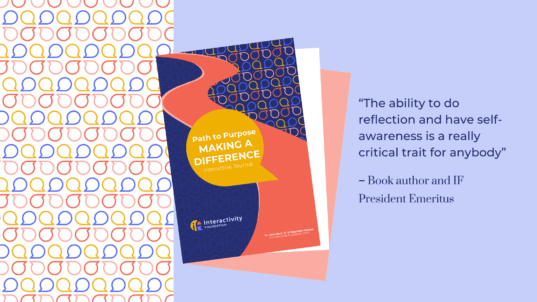
Photo by Andrea Piacquadio from Pexels
How can we manage the flow, when conversations shift to videoconferencing?
“One of the skills you are going to need to develop is to look for discussion participation clues,” Professor Sonja Berenson told her class. “These skills will tell you when someone wants to say something. For some, they may raise their hand. For others, the clue may be a subtler quick lift of the finger. Some may lean forward, while others may open their mouth like they want to say something. Actually, your ability to read these clues is a valuable skill to have when you interact with others, no matter the setting.”
When you see the discussion clue, then you need to mentally queue up those who wish to speak. Think of an air traffic controller who needs to have a mental sense of the planes queueing up, getting ready to land.
Berenson was very impressed by how her student discussion facilitators were able to read the clues and manage the flow of their discussions. Then the coronavirus came. The campus shut down and her class needed to be taught remotely. She was able to transition the discussions to Zoom sessions. But the clues her students became so good at reading were hard to identify on Zoom sessions. The flow of the discussions was chaotic and intermittent. She needed a better way for her discussion facilitators to organize the participation flow.
She emailed her class the following note:
I would like each one of you to obtain a 3″x5″ index card. Color it red. When you want to say something, place the index card so the discussion leader can see it. For the discussion leaders, place the name of each of your group members on an index card. As you see the discussion cue card of one of your classmates, start forming a discussion queue using their name cards. That way you will have an easy way to manage the discussion flow.
The cue cards worked well and the discussions continued to flow in a productive way. Of course, Berenson knew that students could use Zoom functions to virtually “raise their hands” or send a chat note to the facilitator. She also knew, however, that the more technology used during the discussion, more likely the participants could become distracted or bogged down by technical glitches. Likewise, the facilitator needed to stay focused on the images of the participants and not be distracted by other panels on the screen. In short, she consciously chose not to incorporate all the technical bells and whistles just because they were available. Instead, she opted for more reliable (albeit “old school”) applications so that the facilitator and the participants could focus their attention on the actual discussion.
For the upcoming term, Berenson’s school announced that they would allow some in-person classes, but that social distancing restrictions would be in effect for seating. Berenson felt that it just wouldn’t be possible (or safe enough) to have effective team discussions with masked students sitting six feet from each other. She decided to plan for returning her students’ team discussions to a Zoom format.
In the meantime, she received an email message from one of last semester’s students.
Thank you very much for showing me how to do effective discussions remotely. Where I work, we have a number of remote conference calls each day. These were a mess with people talking over each other. I showed each team I was on how to use the discussion cue cards and practice queuing. You won’t believe this but I’ve been asked to be the discussion facilitator for each team I’m on. The discussion cue cards have now become best practice for our calls. This simple idea has given me a great start in my career.
Managing the discussion flow is a key skill for facilitating discussions–a skill made trickier by the visual limits of online platforms. How are you approaching this challenge? What tips would you share for better managing the flow of online conversations, especially as we continue to deal with the physical distancing requirements of the pandemic?
* * *
Patience is inversely proportional to the distance from the front of the queue.– John Day (author)
This post is part of our “Think About” education series. These posts are based on composites of real-world experiences, with some details changed for the sake of anonymity. New posts appear Wednesday afternoons.



